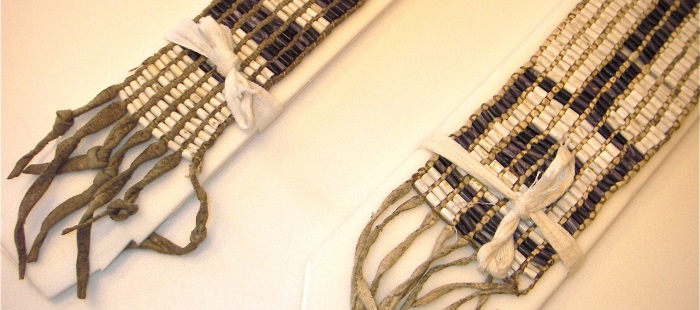Thursday, October 2, 2014 - 12:30pm
Nevil Classroom, Penn Museum
3260 South Street, University of Pennsylvania, Philadelphia, PA

Tracking Broken Chains of Custody
Margaret Bruchac, University of Pennsylvania
Wampum belts (constructed of light and dark shell beads woven together with twine and leather) have long been used by Native American peoples to encode and facilitate inter-tribal and international relations. Federal legislation and national museums have identified wampum belts as iconic and inalienable items of cultural patrimony, and Haudenosaunee (Iroquois) tribal leaders have been actively seeking to repatriate wampum for more than a century. Yet, a number of wampum belts in museum collections are classified as only vaguely identifiable objects lacking in provenance. This talk highlights recent research that recovered detailed provenance data on several supposedly mysterious wampum belts. A five diamond wampum belt recording ongoing relations among the Six Nations and the Catholic Mohawk at Kanesatake was once secreted among the collections at the Museum of the American Indian, and recently surfaced for sale at a Sotheby’s auction. A path wampum belt currently housed at the Penn Museum, originally intended to facilitate peaceful relations among the Haudenosaunee, Mohican, and missionaries in the 1790s, was acquired and sold by a collector. In each case, collectors and curators represented these significant indigenous cultural records as though they were merely valuable antiquities, abstract art objects, and relics of vanished Indians. These false representations concealed historical origins even though much of the key data was preserved in museum archives and correspondence. Through restorative research, Bruchac successfully tracked the movements of each of these belts through the hands of various collectors, while charting the imposition of values that obscured indigenous meaning. These objects were also caught up in the emergence of a lucrative market in American Indian art that relied upon the physical alienation of iconic artifacts and the scholarly re-classification of tribal patrimony as privately-owned "art." This research project critiques the pervasive influence of museum fakelore, and illustrates the importance of combining archival research with Indigenous consultation to recover far more coherent understandings of colonial events and Indigenous objects, past and present.

 Native American & Indigenous Studies at Penn
Native American & Indigenous Studies at Penn